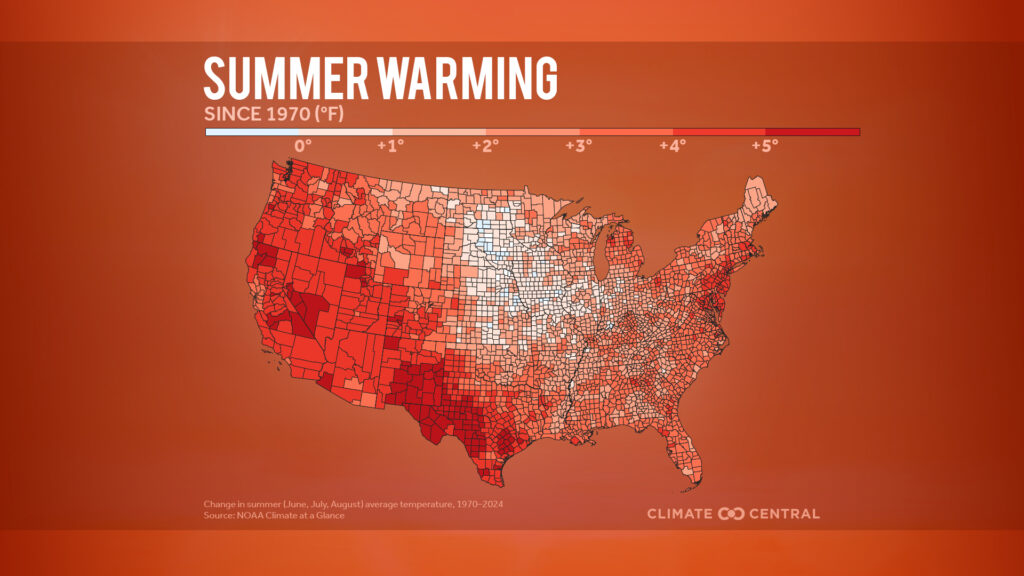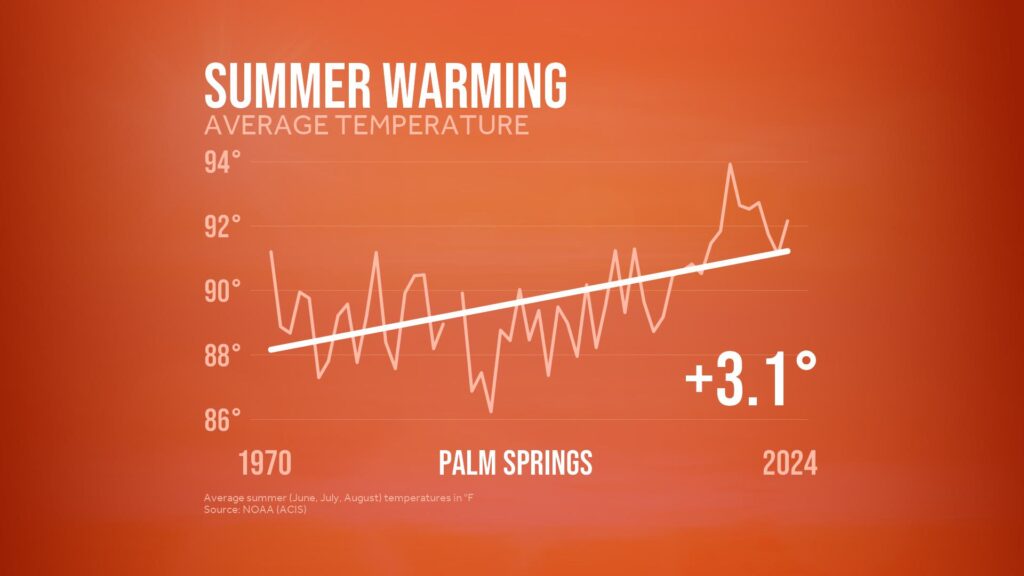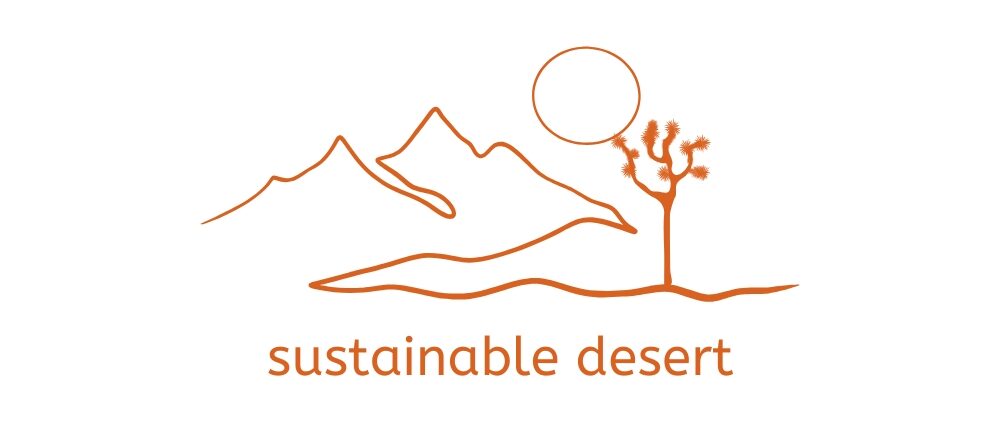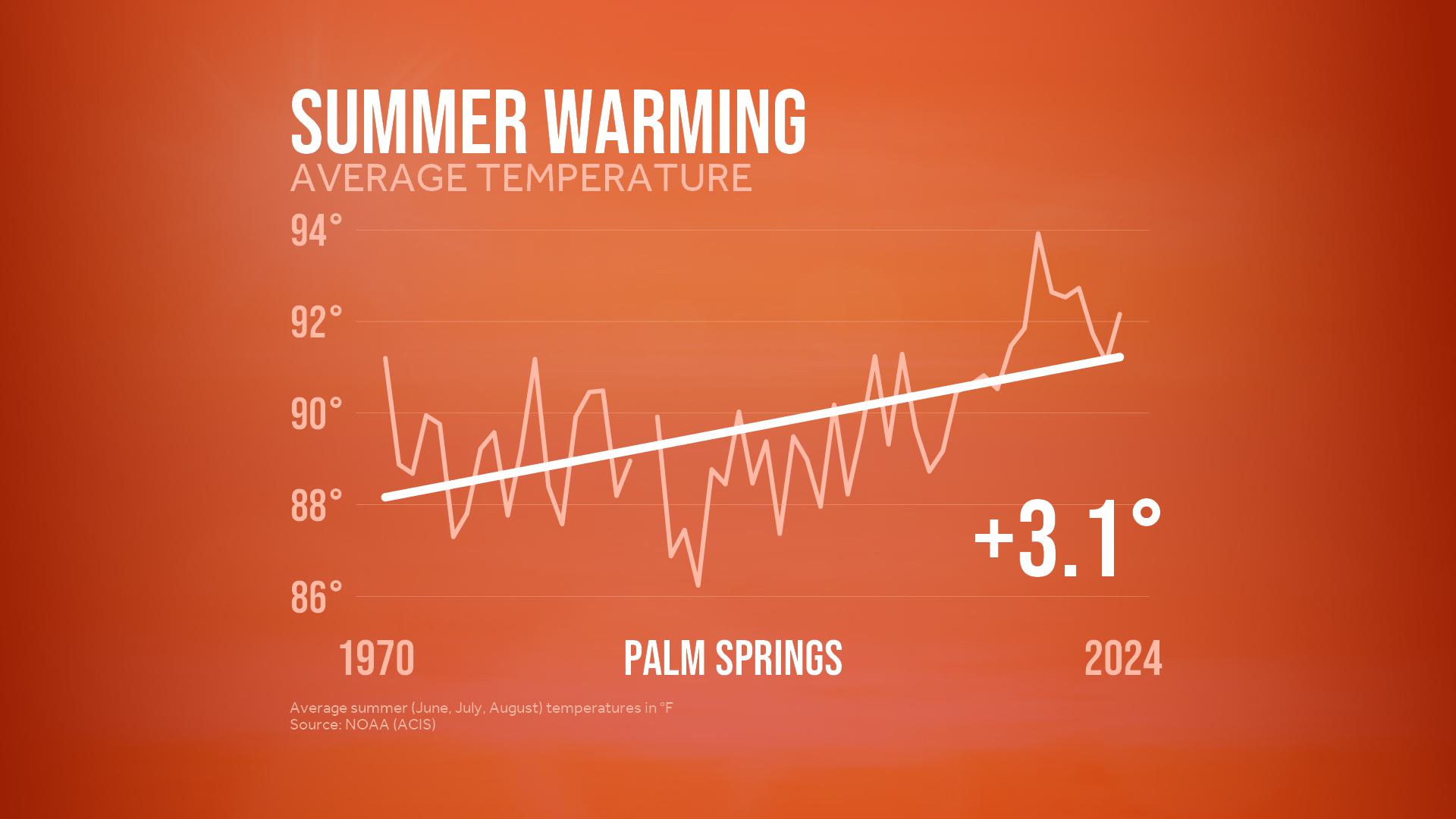Meteorological summer has arrived in Palm Springs, and with it comes the familiar triple-digit temperatures. However, recent data reveals that these scorching days are not just seasonal norms—they’re part of a concerning trend linked to climate change.

Since 1970, summers have warmed in 97% of 242 U.S. cities analyzed, with an average increase of 2.6°F. Palm Springs has warmed above average with an increase of 3.1°F since 1970.

Palm Springs now experiences more days exceeding 108°F, a threshold that defines extremely hot days in this region. In fact, Palm Springs has seen a significant uptick in the number of days above normal since 1970.

The intensity of heatwaves has also escalated. On July 5, 2024, Palm Springs reached a staggering 124°F, setting a new all-time high for the city. This wasn’t an isolated incident; the city tied the national record for the highest October temperature in the U.S. on October 1, 2024, underscoring the extended duration of extreme heat events.
Health Implications of Rising Temperatures
The escalating heat poses serious health risks. In 2023 alone, the U.S. recorded 2,325 heat-related deaths. Palm Springs, with its aging population and outdoor lifestyle, is particularly vulnerable. Extended periods of extreme heat can lead to heat exhaustion, heatstroke, and exacerbate existing health conditions.
The urban heat island effect amplifies the heat in cities like Palm Springs. Concrete and asphalt absorb and re-emit heat, making urban areas significantly warmer than their rural surroundings. This effect, combined with stagnant air conditions, contributes to poor air quality. Notably, Palm Springs led the nation with 450 unhealthy ozone days over a recent four-year period, highlighting the intersection of heat and air pollution.
Steps Toward Heat Resilience
Addressing the escalating heat requires a multifaceted approach:
- Community Cooling Centers: Establishing accessible, air-conditioned spaces for residents during heatwaves.
- Urban Greening: Planting trees and creating green spaces to provide shade and reduce urban temperatures.
- Public Awareness Campaigns: Educating residents on heat safety measures and recognizing signs of heat-related illnesses.
- Infrastructure Adaptation: Implementing heat-reflective building materials and designing structures to withstand higher temperatures.
What You Can Do to Alleviate the Heat
- Install Shade: Use outdoor shade sails, pergolas, or reflective window films to block direct sunlight.
- Use Ceiling Fans: Circulate air to help your body feel cooler without relying solely on A/C.
- Plant Shade Trees: Native desert trees like palo verde, mesquite, or desert willow provide shade and habitat.
- Support Green Infrastructure Projects: Advocate for more shade trees, parklets, and cooling corridors in your neighborhood.
- Help Others: Check on neighbors, especially seniors, during heatwaves. Share info about cooling centers (find them via RivCoReady.org).
- Join Local Resilience Efforts: Volunteer with organizations working on sustainability and climate adaptation in the Coachella Valley.
- Stay Hydrated: Carry water everywhere, especially if you walk or bike.
- Dress for the Heat: Wear light, loose, breathable clothing and a wide-brimmed hat.
- Know the Signs of Heat Illness: Dizziness, heavy sweating, and nausea can signal heat exhaustion—take them seriously.
Learn More
📊 Climate Central 2025 Summer Package

